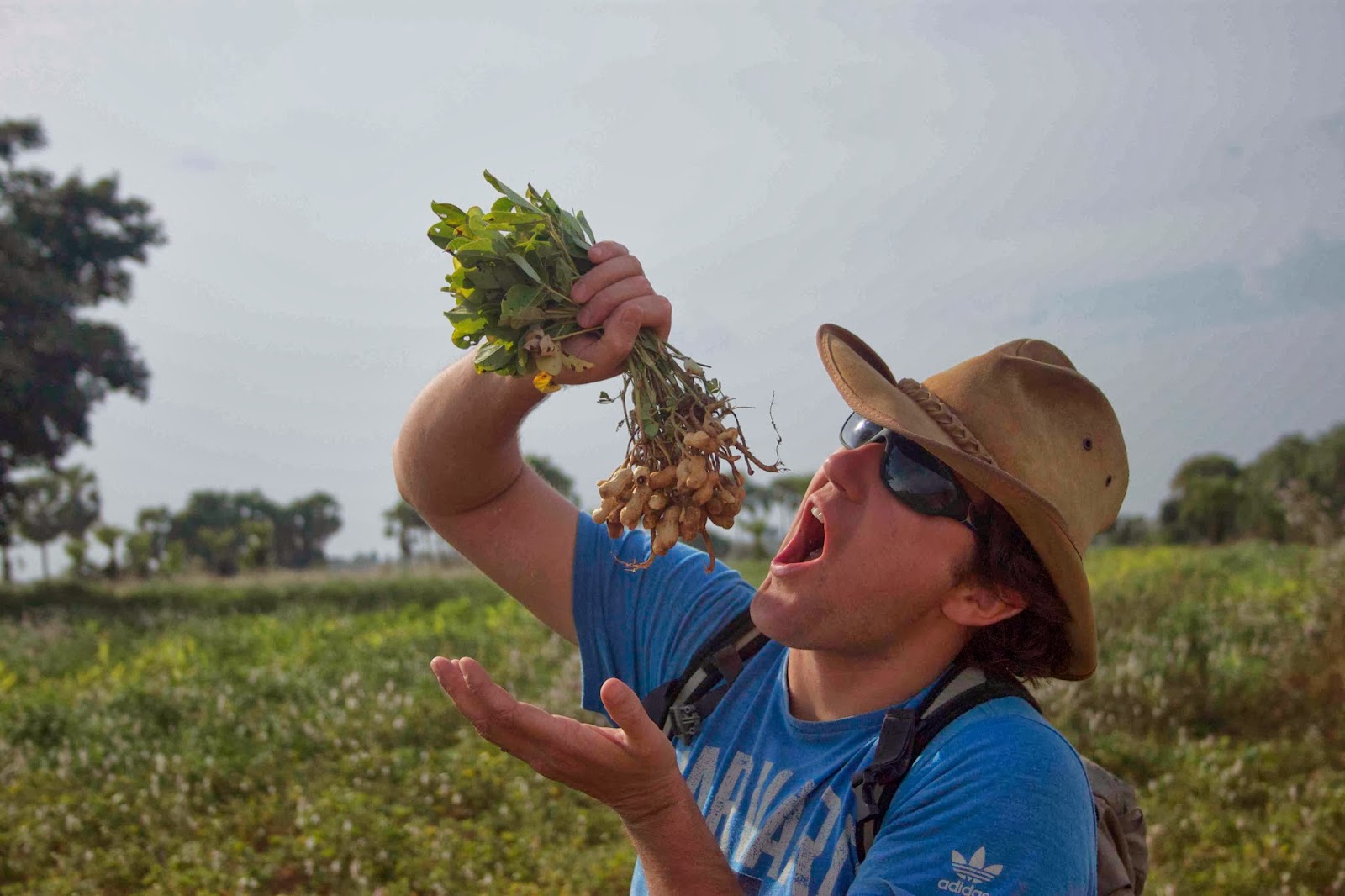The reason for our premature departure from the Mandalay Express was
to spend a day exploring an archaeological sight 12 miles to the south east of
Shwebo called Hanlin. Set on an
imperceptible rise it sits very slightly above the pan flat surrounding plains.
With this geographical advantage plus hot salt springs and fresh cool springs
this small plateau has been inhabited for millennia.
In Shwebo we’d struggled to find an English speaking guide but that
evening we got chatting to a retired
Burmese teacher who spoke good English and for the price of lunch would
accompany us to the site having never been their himself.
The next morning he met us at our guesthouse and introduced us to
his friend, Kyaw Soe, who provided motorcycle transport to and from Hanlin and
did a little guiding too, speaking pretty good English. So with our two guides
and on our two motorcycles we headed out to Hanlin.
On the outskirts of the town we turned off the tarmac road on to a
track that followed a canal system used to irrigate the fields. As it is the dry season, the canal was more
of an empty moat with a few inches of stagnant water in the bottom.
Nevertheless it was still being used for washing and bathing by the villagers
we passed by. After about 5 miles we crossed the canal by wooden bridge and
continued down a second track which got rockier and bumpier and eventually
became a rutted cart track requiring pro-BMXer skills just to stay upright –
thankfully neither of us were driving just clinging on!
The villages we passed through became more and more basic, motorcycle
gave way to cycle and the ox-cart was the only vehicle for moving cargo and
crops.
Hanlin is a walled site around 540 hectares is size which developed
and flourished from 200BC to 900AD by the Pyu, a civilisation characterised by
their sensitive adaptation and development of their urban forms to the
landscape. They utilised the topography
and geography to irrigate and expand agricultural production and develop the
surplus necessary for urban population expansion, labour specialisation and
active participation in the growing regional trade networks.
The other amazing feature found at Hanlin is the visible transition
from earlier Iron Age cultures through to the Pyu as the site has been
continually inhabited, including use of burial sites and reuse of religious
structures.
We toured the site visiting burials, stupas and other excavations,
stopping briefly for some green tea and rice pancakes with egg – delicious.
Both our guides told us about the site, the people, the villages around Shwebo,
the crops being grown and answered all our questions.
On our way back to town the kids in the villages were coming home
from school, they all waved and shouted to us as we drove down the street,
“mingalaba, hello, byebye..” smiling and waving back we felt like film stars.
The hot springs are used for bathing and washing clothes by the villagers
The only other traffic on the road
A group of 10 ladies threshing this plant to remove the seed which is a major myanmar export. The branches are then used for firewood and making brush fencing.
The whole site is covered in stupas, some derelict and tumbling down, others repaired and some brand new
A quick stop for peanuts
An old temple dating back to the early Pyu period, complete with small standing stones, very reminiscent of Phranang beach in Railay
The graves of bronze age and Pyu people, the nature of the soil here means the bodies have been very well preserved, the bones have partly calcified and therefore almost fossil like. This lady's stone and metal bracelets can still be seen on her wrists.
Pots of food and other grave goods are placed upon the person to help them with their journey to the afterlife
Our fantastic guides
Nice crash helmet Sarah!










Sounds and looks amazing
ReplyDeleteLooks like Chris is enjoying the food :-) Jx
ReplyDeleteGreen tea and rice pancakes with egg sounds awesome! I buy gunpowder tea. I tend to serve it in a small cup with plenty of sugar; this is how they drink it in Lebanon. The hot springs look lush! xxxxx
ReplyDelete